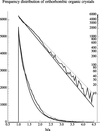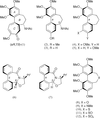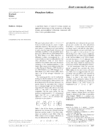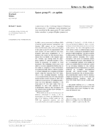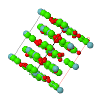issue contents
June 2005 issue

Cover illustration: The arrangements of boxes shown represent the possible packing patterns of four molecules (each with dimensions L, M and S) in a unit cell, as described by the Box Model of crystal packing [Pidcock & Motherwell (2004). Cryst. Growth Des., 4, 611-620]. Application of this model to experimental P21/c structures revealed that the lower surface area packing patterns, for example 221L and 221M, are populated to a much greater extent than the higher surface area packing patterns of 114M and 114L. This finding indicates molecular shape is of primary importance in crystal packing [Pidcock & Motherwell (2004), Acta Cryst. B60, 539-546; Pidcock & Motherwell (2004), Acta Cryst. B60, 725-733].
research papers




 access
access



 access
access







 access
access



 access
access

short communications
letters to the editor





 journal menu
journal menu

















